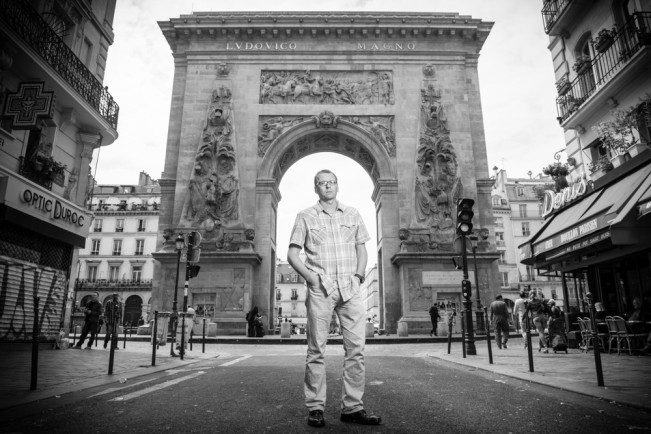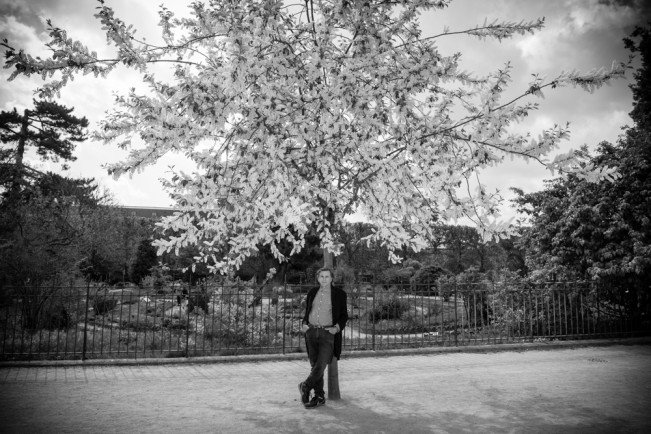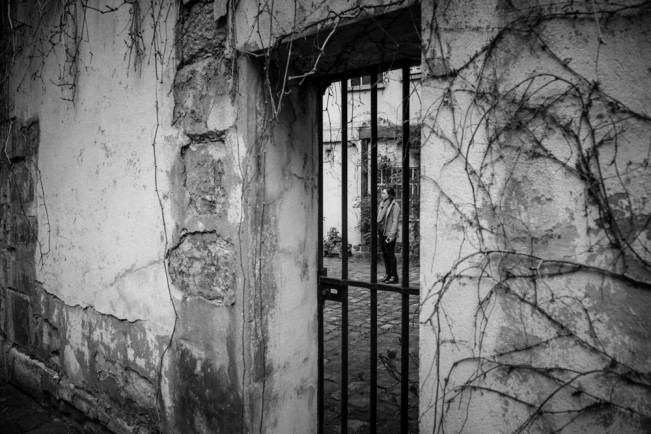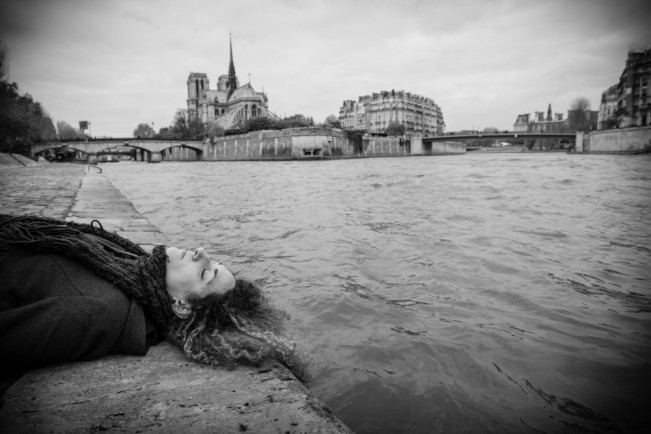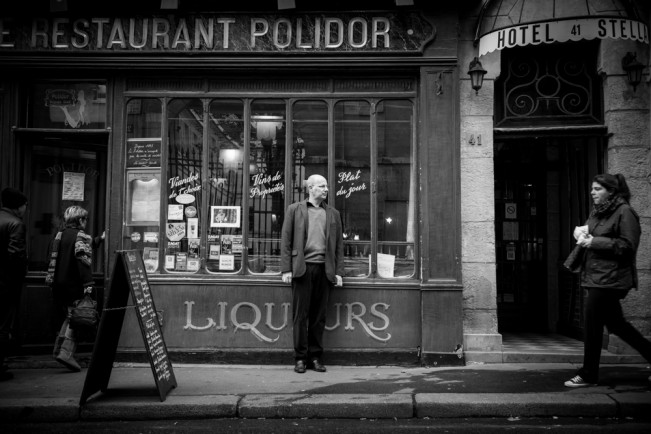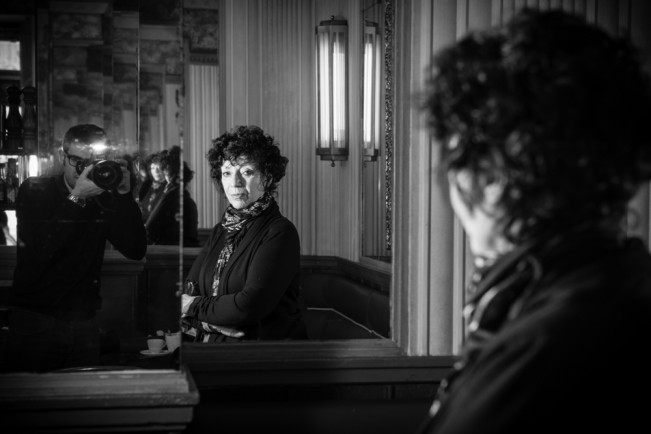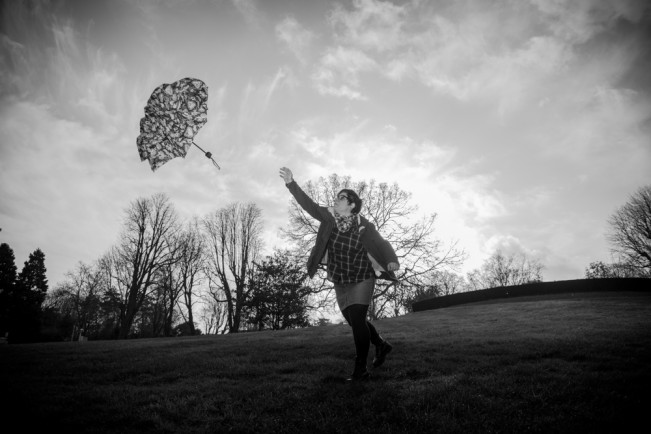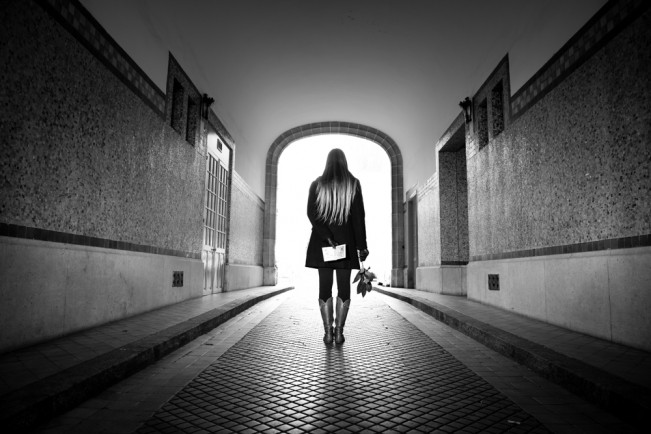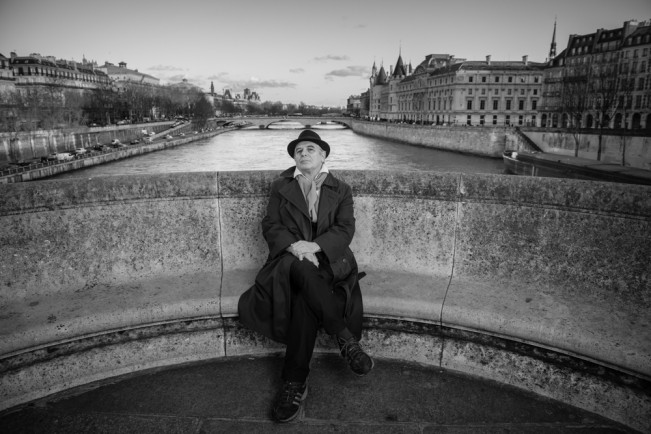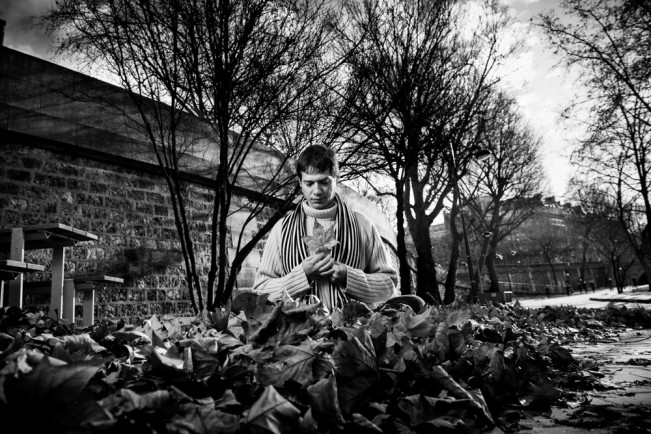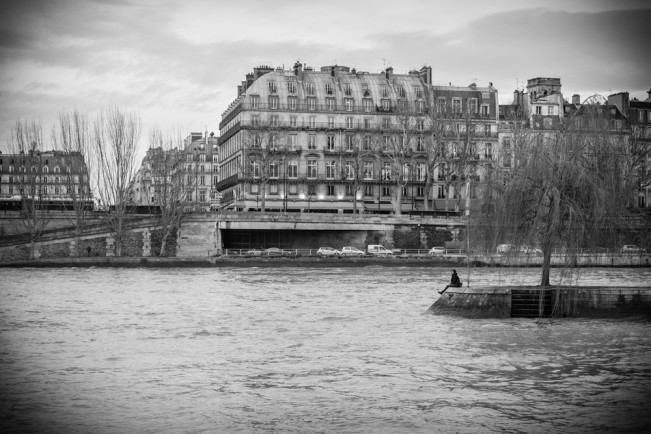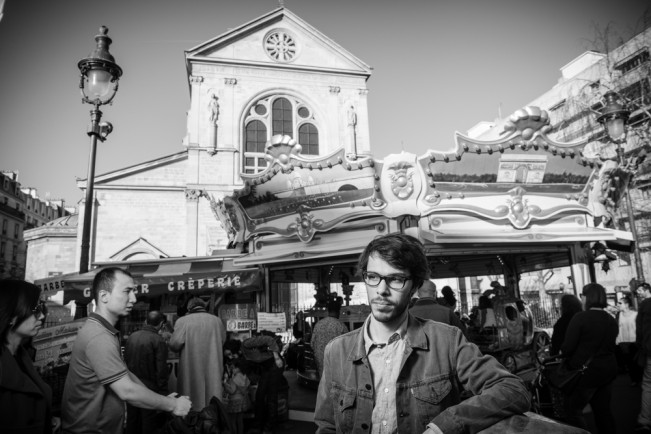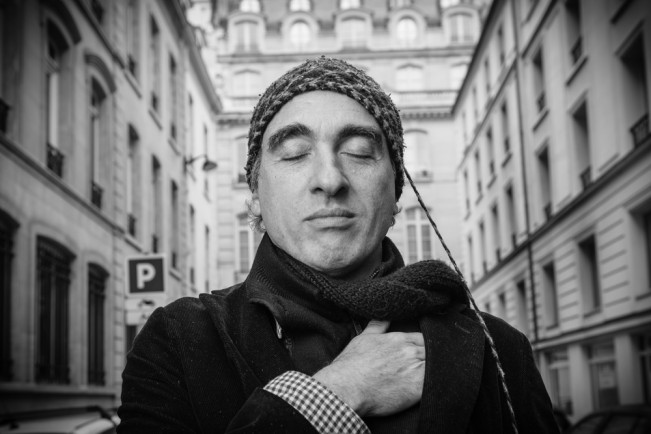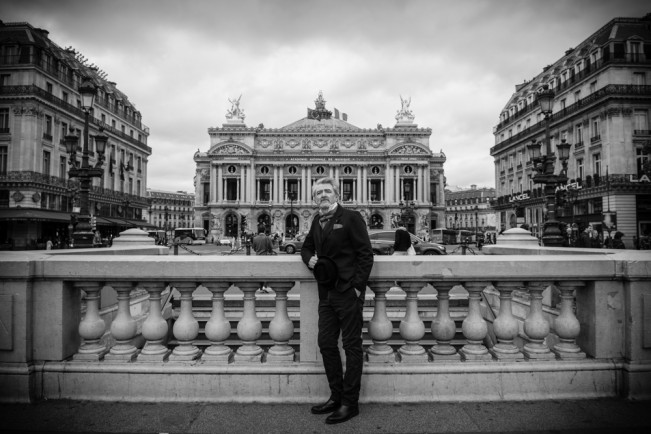Hugo Passarello Luna: Unexpected Photo Essay on Rayuela Cortázar, his readers and Paris
Chosen fragment:
“And why not, why shouldn’t I go looking for La Maga, most of the time it was just a case of putting in an appearance, going along the Rue de Seine to the arch leading into the Quai de Conti and I would see her slender form against the olive-ashen light which floats along the river on the Pont des Arts, we used to go along there in search of shadows, to eat fried potatoes in the Faubourg Saint-Denis, to kiss by the barges on the Saint-Martin canal.”
Hopscotch, Chapter 21, Julio Cortázar
Why did I choose this fragment and place?
I chose the streets Faubourg-Saint-Denis and Rue Martel, both in the 10th arrondissement, because Julio Cortázar was bound to this neighborhood. When I moved to 15 Rue Martel, in 2005, I learned that Cortázar had lived right across the street until his death, in 1984. The Faubourg street is important to me. It used to be the traditional road leading to Saint-Denis basilica [where most French kings are buried]. It also represents the Parisian social diversity. Besides, it was the setting for another artistic topography where Jean-Luc Godard filmed Une femme est une femme (A Woman Is a Woman, 1961).
Photographer and Journalist, Hugo Passarello, has created an”Unexpected Photo Essay on Cortázar, his readers and Paris“. This is a series of portraits, taken in Paris, of friends and readers of Argentine writer Julio Cortázar to celebrate the 100th anniversary of his birth. Each of the 70 participants had to choose a passage from the book Hopscotch that mentions a place in Paris. He then took a portrait of them in the chosen site, and asked them to briefly explain why they preferred it over others. The project seeks to create a “hopscotch” of images that weaves together the personal stories of participants with Cortázar and Paris.
The project was created to celebrate the 100th anniversary of Cortázar’s death birth and 30th of his death. Hugo wanted to join in on the wave of celebrations and carry out a project to discover his readers and the city where he wrote most of his books.
The guidelines were straightforward: each participant had to choose a passage of the book Hopscotch that mentions a place in Paris, and then explain why they chose it over others. The photos were taken in black and white evoking the passage of time, the half a century that passed since the publication of Hopscotch. There is not one prearranged narrative sequence but many. They depend on the participants’ selection of passages and places; and on the readers’ choices.
Chosen fragment:
“At first it had been like a bloodletting, being here, a flogging to be taken internally, the need to feel a stupid blue-covered passport in my coat pocket, the hotel key hung securely on its rack. Fear, ignorance, bewilderment. This is the name of this thing, that’s how you ask for that thing, now that woman is going to smile, the Jardin des Plantes starts at the end of that street.”–Hopscotch, Chapter 2, Julio Cortázar
Why did I choose this fragment and place?
Back in 1980 I worked on a film about Julio Cortázar (1). Everybody on the set was fascinated by his presence, his intensity and his poetry. When we filmed him in the aquarium of the Jardin des Plantes in Paris, we asked him to get his face close to the fish tank where the axolotls fish were showcased. Julio suffered a panic attack and refused. We finally managed to film the scene by juggling around in the editing room: we only showed him leaving the building.
For years, Julio visited these amphibians which have the peculiarity of never becoming adults. They even inspired one of his short stories. In that text, the main character is fascinated by the gaze of the axolotls and the world it reflects. He eventually transforms into one of them.
This is the fantastic universe of Cortázar. (1) Julio Cortázar. Documentary by Alan Caroff and Claude Namer. France. 1980. 40 minutes
Chosen fragment:
“With her I would feel a new air come over me, the fantastic patterns of the sunset or the way things would put themselves in patterns when we would be together by the bars of the Cour de Rohan and the tramps would ascend into the fearful moonlit world of witnesses and judges…”–Hopscotch, Chapter 21, Julio Cortázar
Why did I choose this fragment and place?
To succeed in crossing, is to pierce the spirit, to sustain the belief that the harshness of those bars will not prevent you to surpass yourself, to make you more human and more sensitive with time. Time and space become one if you enjoy the present, doing what you love to do. To renew oneself is to live.
Chosen fragment:
“’I feel so sorry for you, Horacio.’
‘Oh no; hold it right there.’
‘You know that sometimes I really can see. I see things so clearly. To think that an hour ago I thought the best thing to do would be go jump in the river.’
‘Body of an unidentified woman found in Seine… But you swim like a swan.’”–Hopscotch, Chapter 20, Julio Cortázar
Why did I choose this fragment and place?
For me Hopscotch is a book you read when you are young, a book of questions and discoveries, but not that many answers. During my youth the metaphysical and festive voyages of Horacio and La Maga, motivated me as much as the Gliglish language. It was one of my first erotic readings, plunged in that river of human and divine mysteries. There were many questions on the meaning of life and death, both tied to each other.
The fragment I chose highlights the idea of death as something logic and liberating if done in the Seine, a river that I learnt to like as a character of the book. The concept of the end of life and the image of the river, of the water in the background, made me chose these lines among all the others, all full of images worthy of a masterpiece like Hopscotch.
Chosen fragment:
“…and all of a sudden woman opens her purse to pay for a cafe-créme, her fingers play for an instant with the always imperfect clasp on the purse. You get the feeling that the clasp is guarding against an entry into a sign of the zodiac, that when that woman’s fingers find a way to slide down the slender golden stem and with an imperceptible half-turn the catch loosens, some outflow will dazzle the customers absorbed in their pernod and Tour de France, or maybe they’ll be swallowed up, a purple velvet funnel will pull the world off its hinges, all of the Luxembourg, the Rue Soufflot, the Rue Gay-Lussac, the Café Capoulade, the Fontaine de Médicis, the Rue Monsieur-le-Prince, it will swallow up everything in one last gulp that will leave nothing but an empty table, the open purse, the woman’s hands which take out a hundred-franc note and hand it to Père Ragon, while Horacio Oliveira, naturally, the gaudy survivor of the catastrophe, prepares to say what you say at moments of great catastrophe.”–Hopscotch, Chapter 76, Julio Cortázar
Why did I choose this fragment and place?
I arrived in Paris, back in 1990, and I did it through Rue Monsieur-le-Prince. Because it was in that street where I met my first professor of the School for Advanced Studies in the Social Sciences (École des hautes études en sciences sociales). His office was just across from the Polidor restaurant where the action of “that” Cortázar book takes place, and which chapter 62 of Hopscotch imagines full of “foreign occupying forces, advancing in the quest of their freedom of the city.” And in this city I stayed, to this day.
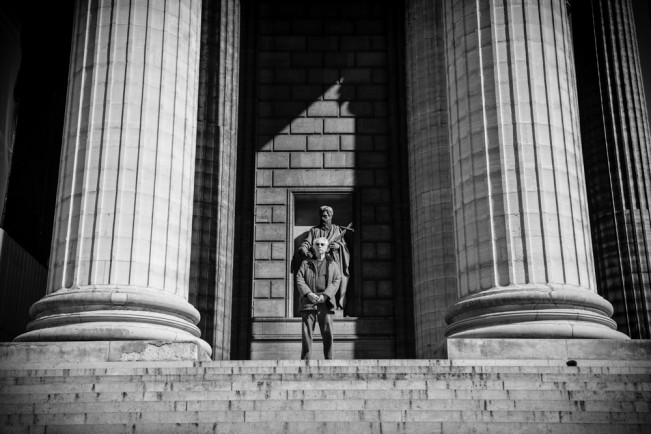
Mario Goloboff, Writer, author of “Julio Cortázar. La biografía”. Argentinean. Chosen place: Madeleine
Chosen fragment:
“And while somebody explains something as always, I don’t know why I am in this café, in all cafés, in the Elephant & Castle, in the Dupont Barbès, in the Sacher, in the Pedrocchi, in the Gijón, in the Greco, in the Café de la Paix, in the Café Mozart, in the Florian, in the Capoulade, in Les Deux Magots, in the bar that puts its chairs out on the Colleone square, in the Café Dante fifty yards away from the tomb of the Scaligers and that face on a pink sarcophagus that looks as if it had been burned by the tears of Saint Mary of Egypt, in the café across from the Giudecca, with aged and impoverished marchionesses drinking a tiny tea and getting expansive with dusty ambassadors, in the Jandilla, in the Floccos, in the Cluny, in the Richmond, in Suipacha, in El Olmo, in the Closerie des Lilas, in the Stéphane (which is on the Rue Mallarmé), in the Tokio (which is in Chivilcoy), in the Au Chien Qui Fume, in the Opern Café, in the Dôme, in the Café du Vieux Port, in cafés anywhere…”–Hopscotch, Chapter 132, Julio Cortázar
Why did I choose this fragment and place?
I chose Madeleine for many reasons. It was the area I lived in when I first arrived to Paris, many years ago. It was also a place, a neighborhood, important to Cortázar. And last, because of its name, which, to me, it is typically Parisian and Proustian, something Cortázar liked so much.
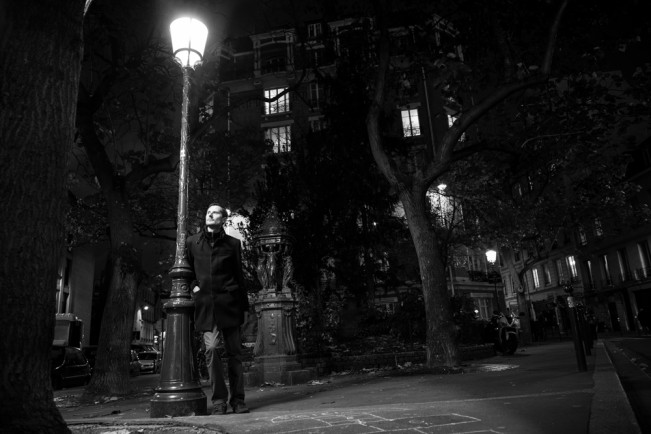
Jérôme Dulou, Spanish Teacher. French. Chosen place: Place Levinas, in between Rue de Tournefort and Rue de l’Estrapade
Chosen fragment:
“On the corner of the Rue Tournefort Oliveira realized that he still had the cigarette butt between his fingers, extinguished by the rain and half melted away. Leaning against a lamppost, he lifted up his face and let the rain wet it all over. That was so nobody could tell.”–Hopscotch, Chapter 23, Julio Cortázar
Why did I choose this fragment and place?
I chose this fragment because it is the first time when Horacio feels a slight sense of happiness after leaving Berthe Trépat at her place, in Rue de l’Estrapade. Leaning against a typical Parisian lamppost, Horacio experiences the complexity of his emotion. He still does not accept to be taken away by what could reconcile him with humanity. He hides his tears of joy by mixing them up with the raindrops falling in his face. I have immense fascination for authors, like Cortázar, that succeed in delving in the complexities of human emotions and relations. It helps me to live mines.
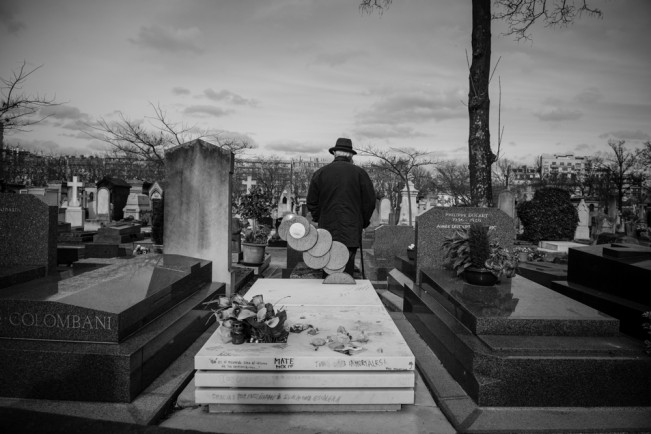
Julio Silva Artist and Cortázar’s best friend. Argentinean. Chosen place: Cortázar’s grave at the Montparnasse cemetery. The sculpture that decorates the tomb was made by Silva and chosen by Cortázar himself just months before his death.
Why did I choose this fragment and place?
It is a place I frequently visit when longing finds shelter in my memories.
Chosen fragment:
“And while somebody explains something as always, I don’t know why I am in this café, in all cafés, in the Elephant & Castle, in the Dupont Barbès, in the Sacher, in the Pedrocchi, in the Gijón, in the Greco, in the Café de la Paix, in the Café Mozart, in the Florian, in the Capoulade, in Les Deux Magots, in the bar that puts its chairs out on the Colleone square, in the Café Dante fifty yards away from the tomb of the Scaligers and that face on a pink sarcophagus that looks as if it had been burned by the tears of Saint Mary of Egypt, in the café across from the Giudecca, with aged and impoverished marchionesses drinking a tiny tea and getting expansive with dusty ambassadors, in the Jandilla, in the Floccos, in the Cluny, in the Richmond, in Suipacha, in El Olmo, in the Closerie des Lilas, in the Stéphane (which is on the Rue Mallarmé), in the Tokio (which is in Chivilcoy), in the Au Chien Qui Fume, in the Opern Café, in the Dôme, in the Café du Vieux Port, in cafés anywhere…”–Hopscotch, Chapter 132, Julio Cortázar
Why did I choose this fragment and place?
I chose the “non-place” of mirrors, omnipresent in all Parisian cafés to multiply people and space (and this for our joy, despite what the heresiarchs from Tlön might think). Julio Cortázar loved crystals and reflections. “On est mieux ici qu’en face” (“We are better here than across the street”). This legend is often found above the entrance of parochial French cafés facing a cemetery. Maybe Cortázar had the same opinion, but he condemned many of his characters to be trapped in the mirror world: the distant Alina Reyes; the faced-up motorcyclist; the one fascinated by the axolotl. I chose to stay on this side so I could write this epigraph to honor Cortázar. Mirroring him.
Chosen fragment:
“Oh, Maga, whenever I saw a woman who looked like you a clear, sharp pause would close in like a deafening silence, collapsing like a wet umbrella being closed. An umbrella, precisely. Maybe you remember, Maga, that old umbrella we sacrificed in a gully in Montsouris Park one sunset on a cold March day.”–Hopscotch, Chapter 1, Julio Cortázar
Why did I choose this fragment and place?
If we order them chronologically, the first reason for which I chose this fragment comes from the first time I read Hopscotch. Back then I had already decided to stop using umbrellas altogether, so the description of sacrificing an umbrella impressed me and got engraved in my memory. The second reason is literary; the image that Cortázar builds is beautiful. Finally, the last reason, and probably the most important one, is that when I first visited Montsouris Park I did it together with a person I loved very much. We walked around the park discussing the famous scene of the sacrificed umbrella. Needless to say, it rained that day.
Chosen fragment:
“With the key in his hand Oliveira didn’t know what to say. Everything was wrong, none of it should have taken place that day, it was a lousy move in a sixty-piece chess game, a useless joy in the midst of the worst sadness, having to drive it off the way one does a fly, prefer sadness when the only thing that had come into his hands was that key to happiness, a step towards something he needed and admired, a key to open Morelli’s door, Morelli’s world, and in the midst of happiness to feel himself sad and dirty, with his tired skin and bleary eyes, smelling like a sleepless night, like a guilty absence, like a lack of the distance necessary to understand whether he had done well all of what he had been doing and not doing during those days, listening to La Maga’s gasps, the knocking on the ceiling, bearing up under the icy rain in his face, dawn on the Pont Marie,…”Hopscotch, Chapter 154, Julio Cortázar
Why did I choose this fragment and place?
I knew that coming to Paris meant the end of our love story. Even so, I could not help it. Three months later, standing on a Parisian bridge, I threw his ring into the water, just like you scatter the ashes of a loved one. From that moment on, my story started.
Chosen fragment:
“Paris, a postcard with a drawing by Klee next to a dirty mirror. La Maga had appeared one afternoon on the Rue du Cherche Midi. When she came to my room on the Rue de la Tombe Issoire she would always bring a flower, a Klee or Miró postcard, and if she didn’t have any money she would pick up the leaf of a plane tree in the park.”–Hopscotch, Chapter 2, Julio Cortázar
Why did I choose this fragment and place?
Just like so many others who dared to cross to “the other side”, I arrived to Paris with Hopscotch under my arm. During my first year I lived in the Argentinean Student Residency, in the International University campus. It was the same residency where our dear Cortázar lived when he came to Paris. It was beautiful to look through the windows and see the same trees as he did; to stroll around the Montsouris Park looking for a black umbrella; or walk through the Rue de la Tombe Issoire imagining Oliveira’s house. I chose this passage because I have walked this street many times, playing to find La Maga shyly stealing a leaf to offer Horacio.
Chosen fragment:
“Toc, toc
‘Come on, let’s wake up,’ Oliveira would say from time to time.
‘What for?’ La Maga would reply, watching the péniches sail under the Pont Neuf. ‘Toc, toc, you’ve got a bird in your head. Toc, toc, he picks at you all the time, he wants you to give him some Argentinian food to eat. Toc, toc.’
‘O.K.,’ grumbled Oliveira. ‘Don’t get me mixed up with Rocamadour. Before we’re through we’ll be speaking Gliglish to some clerk or doorman and there’ll be hell to pay…”–Hopscotch, Chapter 4, Julio Cortázar
Why did I choose this fragment and place?
It was there where I used to sit and draw thinking of Hopscotch, back in the 70s when I arrived in Paris. In this area there are several animal shops, also mentioned in the book. I used to visit these places to buy plastic doves, a living rabbit and red fish for a show we used to do with my theatre company.
Chosen fragment:
“Wandering along Quai des Célestins I step on some dry leaves and when I pick one up and look at it closely I see that it is full of old-gold dust…”–Hopscotch, Chapter 84, Julio Cortázar
Why did I choose this fragment and place?
I like this passage because the dry leaves represent a universe of signals that life offers us and that we often ignore. I film trees and try to move closer to those magical signs “full of old-gold dust.”
Chosen fragment:
“Wrapping up in black overcoat that reached down to her ankles, she went over to the newcomer. The newcomer agreed that the cold was almost worse than the police. When she got a cigarette from him and lit it, the clocharde got the idea that she knew him from somewhere. The newcomer also said that he knew her from somewhere, and both of them were pleased that they recognized each other at that hour of the morning. […] The newcomer was watching dawn break over the point of Ver-Galant, a willow tree was extricating its spider-webs out of the fog. When the clocharde asked him why he was shivering so much with such a good lumberjacket, he shrugged and offered her another cigarette. They smoked and smoked, talking and looking at each other sympathetically.”–Hopscotch, Chapter 36, Julio Cortázar
Why did I choose this fragment and place?
This place is at the same time anchored in the heart of the city and far from everything. It confronts the Seine and looks over the Pont des Arts, where Hopscotch starts. It is this intermediary zone, present in Cortazarian fiction, which livens up the literary game, from where different realities emerge.
“Me gusta y me regusta.”
Chosen fragment:
“How could anyone fail to be surprised at the existence of Mme. Sanson, Medium-Tarots, prédict. étonnantes, 23 rue Hermel (especially since Hermel, who was probably a zoologist, had an alchemist’s name)…”–Hopscotch, Chapter 155, Julio Cortázar
Why did I choose this fragment and place?
I grew up in this neighborhood and I like to imagine how it looked like 50 years ago. Even if you can still find fortune-teller and psychics, these types of shops no longer exist in Paris. I love all those stories we can tell using these objects, these little things that we gathered in our pockets.
Chosen fragment:
“ ‘I really ought to go,’ Oliveira said to a black cat on the Rue Danton. ‘A certain aesthetic requirement, complete the pattern. Number three, the Clue. But let’s not forget about Orpheus. Maybe if I shave my head and cover it with ashes, go there with a tin cup, like a beggar. I am no longer he that ye once knew, oh women. Tragedian. Mime. Night of empusae and lamiae, evil shadows, the end of the great game. How tiring it gets being the same person all the time. Unpardonably. I will never see them again, it is written. Qu’as tu fait, toi que voilà, de ta jeunesse? An inquisitor, that girl can really make them up… In any case, an autoinquisitor, et encore… An accurate epitaph: Too bland. But a bland inquisition is terrible, cornstarch tortures, tapioca bonfires, shifting sands, Medusa sucking sneakily. Medusa sneaking suckily. And too much pity underneath it all, me, who thought I was pitiless. It’s impossible to want what I want and in the shape I want it, and share life with others besides. I had to know how to be alone and how to let so much wanting do its work, save me or destroy me, but without the Rue Dauphine, without the dead child, without the Club and everything else. Don’t you think so, eh?”–Hopscotch, Chapter 36, Julio Cortázar
Why did I choose this fragment and place?
Because it brought together a couple of condiments: the day we took the photo it was raining but we did not want to let the opportunity to escape. The street was nearby and worthy of Cortázar.
It seems to me it is a photogenic place because of the photo achieved.
Let me tell you a secret: that narrow street is in black and white. Very few people know this.
Chosen fragment:
“And while somebody explains something as always, I don’t know why I am in this café, in all cafés, in the Elephant & Castle, in the Dupont Barbès, in the Sacher, in the Pedrocchi, in the Gijón, in the Greco, in the Café de la Paix, in the Café Mozart, in the Florian, in the Capoulade, in Les Deux Magots, in the bar that puts its chairs out on the Colleone square, in the Café Dante fifty yards away from the tomb of the Scaligers and that face on a pink sarcophagus that looks as if it had been burned by the tears of Saint Mary of Egypt, in the café across from the Giudecca, with aged and impoverished marchionesses drinking a tiny tea and getting expansive with dusty ambassadors, in the Jandilla, in the Floccos, in the Cluny, in the Richmond, in Suipacha, in El Olmo, in the Closerie des Lilas, in the Stéphane (which is on the Rue Mallarmé), in the Tokio (which is in Chivilcoy), in the Au Chien Qui Fume, in the Opern Café, in the Dôme, in the Café du Vieux Port, in cafés anywhere…”–Hopscotch, Chapter 132, Julio Cortázar
Why did I choose this fragment and place?
When going back to my neighborhood, in Pigalle, one of my favourites strolls is to walk up the Opera Avenue. I like to walk past the illuminated terrace of the mythical Café de la Paix, go across the square and appreciate the façade of the Palais Garnier.
Posts on Lenscratch may not be reproduced without the permission of the Lenscratch staff and the photographer.
Recommended
-
Earth Week: Casey Lance Brown: KudzillaApril 25th, 2024
-
Tara Sellios: Ask Now the BeastsApril 6th, 2024
-
ALEXIS MARTINO: The Collapsing Panorama April 4th, 2024
-
Emilio Rojas: On Gloria Anzaldúa’s Borderlands: The New MestizaMarch 30th, 2024
-
Artists of Türkiye: Eren SulamaciMarch 27th, 2024

